Discover Laos beyond the guidebooks with this insider’s travel guide—packed with cultural tips, seasonal insights, and must-see destinations. From serene river journeys to sacred temples and jungle treks, this guide helps you explore Laos mindfully and meaningfully.
TABLE OF CONTENTS
1
Why Laos Should Be on Your Travel List
Peaceful Landscapes, Deep Spirituality, and Warm Hospitality
What Makes Laos Different from Its Neighbors
Ideal for Slow Travel, Culture, and Nature Lovers
2
When Is the Best Time to Visit Laos?
Seasonal Breakdown: Dry vs. Green Season
Festivals to Plan Around (Pi Mai Lao, That Luang Festival)
Best Months for River Cruises and Mountain Adventures
3
How to Get Around Laos Smoothly
Local Transportation: Buses, Tuk-Tuks, and Boats
Domestic Flights and the Laos-China Railway
Travel Times Between Key Destinations (Luang Prabang, Vientiane, Pakse)
4
Where to Go - Must-Visit Destinations in Laos
Luang Prabang - Temples, Night Markets, and Mekong Sunsets
Vang Vieng - Limestone Karsts and River Adventures
Vientiane - A Quiet Capital with Colonial Charm
Southern Laos - 4000 Islands and Champasak Temples
Off-the-Beaten-Path Picks: Vieng Xay, Phonsavan, Muang Ngoi
5
Insider Tips for Cultural Etiquette and Respectful Travel
Temple Etiquette: Dress Codes, Offerings, and Behavior
Interacting with Locals: Smiles Over Words
Do’s and Don’ts for Responsible Tourism
6
Packing and Travel Essentials for Laos
What to Pack for the Climate and Terrain
Health, Medications, and Mosquito Protection
Cash, ATMs, SIM Cards, and Connectivity Tips
7
Bonus Travel Tips from Seasoned Laos Travelers
Best Photography Spots and Times of Day
How to Support Local Communities While Traveling
Traveling in Laos gives you the opportunity to make a meaningful impact.
What Travelers Wish They Knew Before Visiting Laos
8
Final Thoughts: Your Laos Adventure Starts Here
Why Laos Leaves a Lasting Impression
Resources to Plan Your Trip Further
Why Laos Should Be on Your Travel List
Peaceful Landscapes, Deep Spirituality, and Warm Hospitality
Laos offers a unique mix of untouched nature, ancient traditions, and heartfelt local charm. Misty mountains, lush forests, and the slow-moving Mekong River create a tranquil setting that feels far from the noise of modern life. Monks in saffron robes walking at dawn, golden temples glowing in the sun, and villagers offering a warm smile to strangers reflect the deep spiritual roots and genuine hospitality of the country. Laos is a place to breathe, reflect, and reconnect with the world in a slower, more meaningful way.
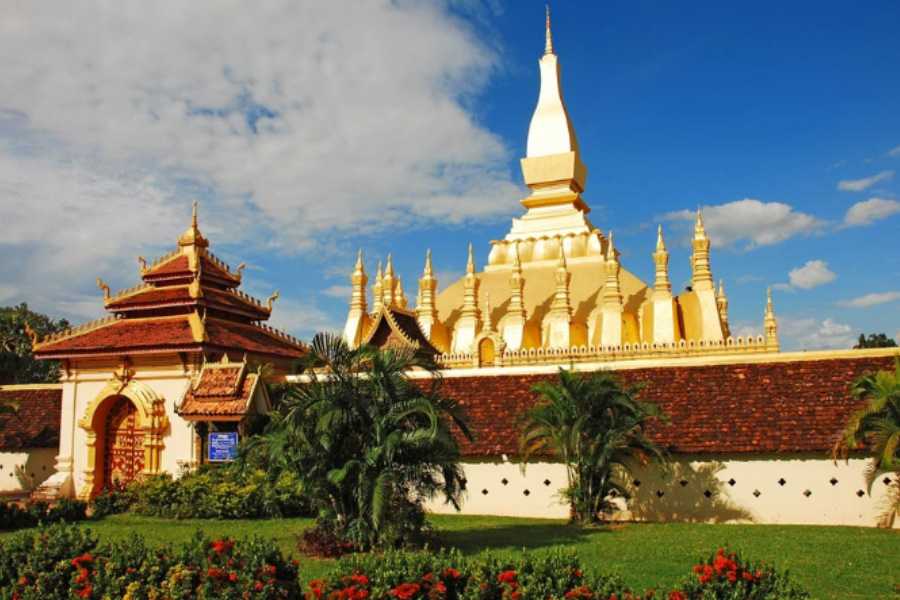
What Makes Laos Different from Its Neighbors
Unlike its more developed or bustling neighbors like Thailand or Vietnam, Laos embraces a quieter rhythm. There are no mega-cities or high-speed trains here - just slow-moving towns, UNESCO heritage sites like Luang Prabang, and rural villages where traditions are preserved and passed down. Laos remains less commercial and more laid-back, offering travelers a more authentic and personal connection to Southeast Asian life.
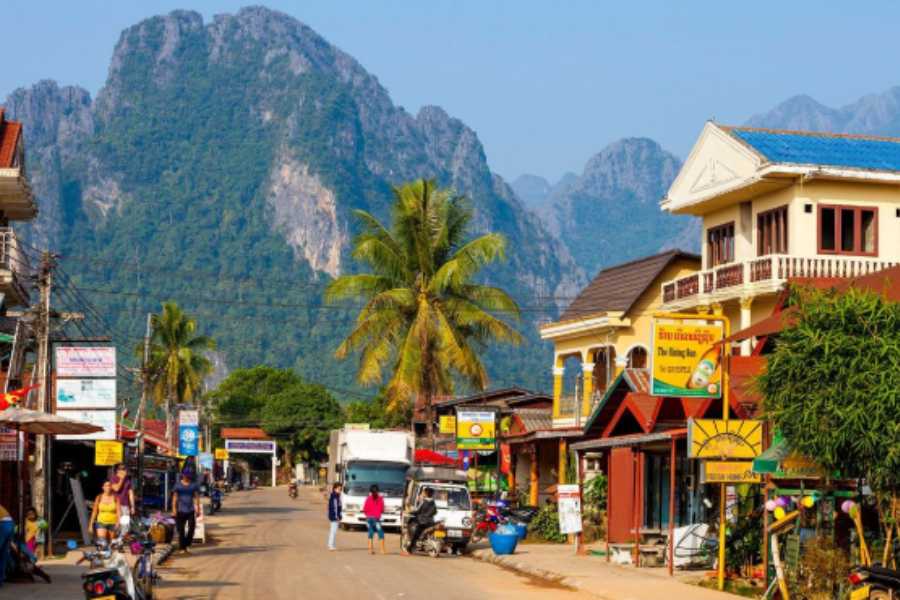
Ideal for Slow Travel, Culture, and Nature Lovers
Laos suits travelers looking for depth over speed. Whether trekking through the jungles of Luang Namtha, exploring Buddhist caves near Vang Vieng, or floating down the Mekong on a wooden boat, the country rewards patience and curiosity. Ideal for backpackers, culture seekers, and nature lovers, Laos invites visitors to engage with its rhythms - to listen, taste, and discover at a peaceful pace.
When Is the Best Time to Visit Laos?
Seasonal Breakdown: Dry vs. Green Season
Laos has two main seasons - the dry season (November to April) and the green or wet season (May to October). The dry season is the most popular time to visit, offering clear skies, cooler temperatures, and ideal conditions for trekking, sightseeing, and river cruises. This is also the best time for photography, with golden light and less humidity.
The green season brings heavier rainfall, especially from July to September, but it also transforms the landscape into a lush, vibrant green. Fewer tourists mean a quieter experience, and the countryside is at its most beautiful. Rural roads can be muddy, but the waterfalls are at full strength and rice fields are at their peak.
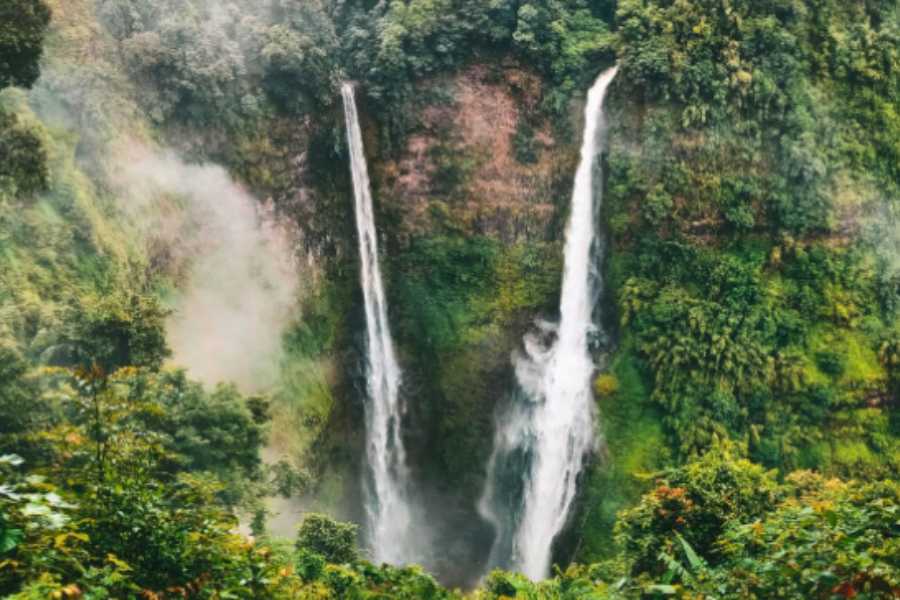
Festivals to Plan Around (Pi Mai Lao, That Luang Festival)
Laos celebrates several unique and colorful festivals. Pi Mai Lao (Lao New Year) takes place in mid-April and is one of the biggest and most joyful celebrations in the country. Expect days of water fights, parades, and temple rituals. It’s an unforgettable time to experience local culture but also one of the busiest travel periods.
Another major event is the That Luang Festival in Vientiane, usually held in November. It honors the most sacred stupa in Laos with religious ceremonies, music, dance, and candlelight processions. For those interested in spirituality and cultural heritage, this is a powerful time to visit.
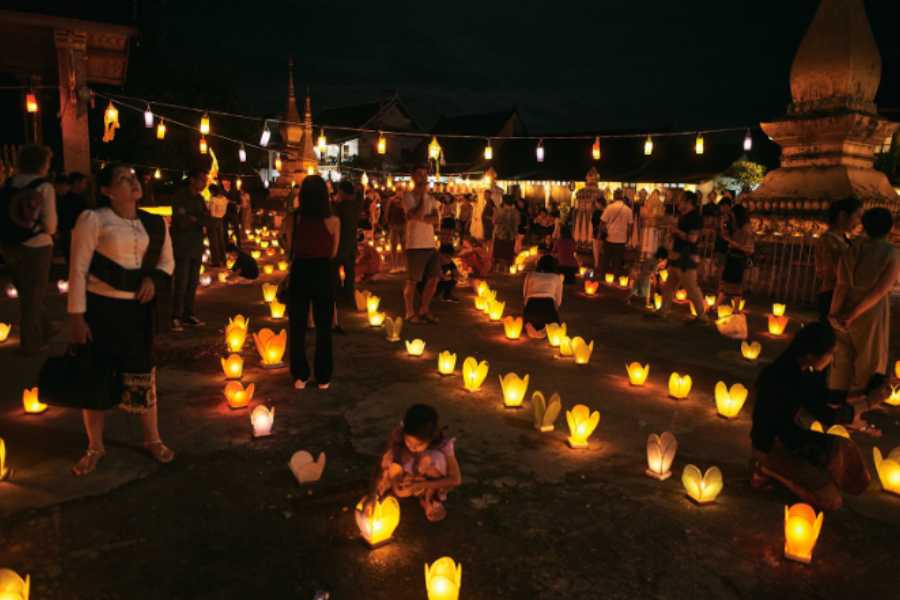
Best Months for River Cruises and Mountain Adventures
For river travel along the Mekong or Nam Ou, the best months are between November and February, when water levels are steady, and temperatures are mild. This season is also perfect for outdoor activities like trekking in Luang Namtha or hiking in the Bolaven Plateau.
If planning a trip to mountainous areas such as Muang Ngoi or Nong Khiaw, December to February offers cooler, more comfortable conditions, with clearer views and less rainfall.
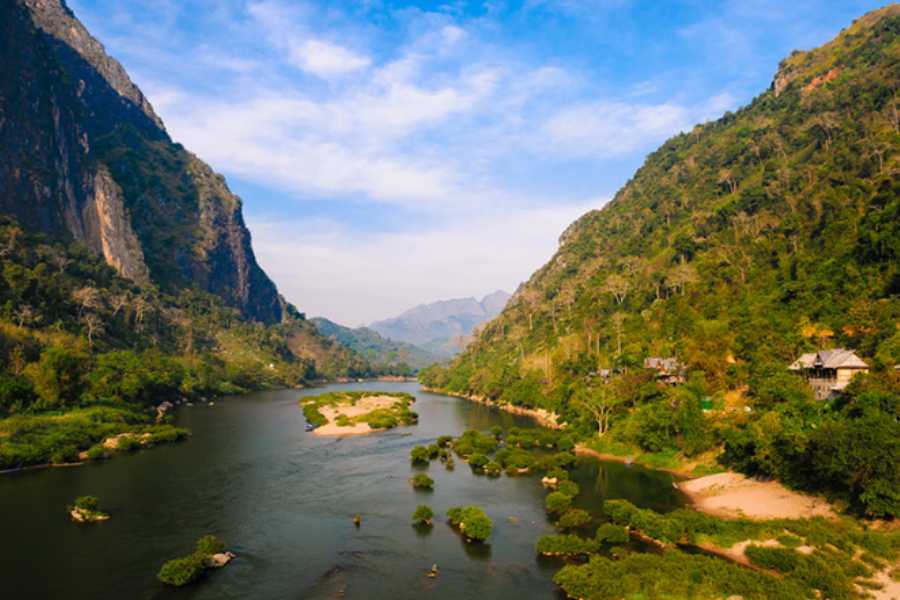
How to Get Around Laos Smoothly
Local Transportation: Buses, Tuk-Tuks, and Boats
Laos offers a range of local transportation options, each adding to the travel experience. Intercity buses and minivans are the most common and budget-friendly way to get around. They connect major towns like Luang Prabang, Vientiane, Vang Vieng, and Pakse. Travel can be slow due to winding roads and stops, but it is reliable and allows a glimpse of local life.
In cities and towns, tuk-tuks and songthaews (shared pickup trucks) are widely available. They are ideal for short distances and provide an authentic way to explore. Be sure to agree on the fare before starting the ride, as prices are often negotiable.

Boat travel remains a traditional and scenic way to reach remote river villages. The slow boat between Huay Xai and Luang Prabang is a classic two-day journey along the Mekong, popular among travelers looking for a peaceful, scenic ride.
Domestic Flights and the Laos-China Railway
For covering long distances quickly, domestic flights are available between major cities like Vientiane, Luang Prabang, and Pakse. Carriers such as Lao Airlines and Lao Skyway operate regular routes, offering convenience for those on tighter schedules.
The Laos-China Railway, launched recently, is a game changer for travel in northern Laos. It connects Vientiane with Luang Prabang, Vang Vieng, and beyond in a fraction of the time it takes by road. The trains are modern, comfortable, and affordable, making them a top choice for travelers seeking efficiency and ease.
Travel Times Between Key Destinations (Luang Prabang, Vientiane, Pakse)
- Vientiane to Luang Prabang
By train: around 2 hours
By bus or minivan: 8 to 10 hours
- Vientiane to Pakse
By flight: about 1 hour
By bus: 10 to 12 hours
- Luang Prabang to Vang Vieng
By train: about 1 hour
By minivan: 5 to 6 hours
- Vang Vieng to Vientiane
By train: around 1 hour
By bus or van: 3 to 4 hours
Planning ahead, especially during peak season, helps avoid delays and ensures a smoother journey.
Where to Go - Must-Visit Destinations in Laos
Luang Prabang - Temples, Night Markets, and Mekong Sunsets
A UNESCO World Heritage Site, Luang Prabang is often the first stop for travelers in Laos. This charming town is known for its well-preserved Buddhist temples, including Wat Xieng Thong and the Royal Palace Museum. In the early morning, witness the alms-giving ceremony as monks walk the quiet streets collecting offerings.
The town comes alive in the evenings with a vibrant night market full of handmade crafts, textiles, and street food. Mekong River sunsets from the peninsula or nearby Mount Phousi offer breathtaking views and a peaceful end to the day.
.jpg)
Vang Vieng - Limestone Karsts and River Adventures
Once known for its party scene, Vang Vieng has transformed into a hub for outdoor adventure. Surrounded by dramatic limestone cliffs and green valleys, it’s perfect for kayaking, tubing, rock climbing, and trekking.
The Nam Song River runs through the town, offering relaxed float trips or scenic riverside cafes. Tham Chang and Tham Phu Kham caves, as well as the Blue Lagoon, are top spots for exploring and cooling off in the countryside.
.jpg)
Vientiane - A Quiet Capital with Colonial Charm
Vientiane, the capital of Laos, is more relaxed than most capitals in Southeast Asia. It features wide boulevards, French colonial buildings, and Buddhist monuments. Key sites include the golden stupa of That Luang, Patuxai (Victory Monument), and Wat Si Saket.
.jpg)
The Mekong riverfront is a great place for an evening walk, especially during sunset. Though not a fast-paced city, Vientiane offers a nice mix of culture, comfort, and calm.
Southern Laos - 4000 Islands and Champasak Temples
Southern Laos offers a different vibe, with laid-back islands, waterfalls, and ancient ruins. The 4000 Islands (Si Phan Don) region is known for its peaceful atmosphere, bicycle-friendly villages, and river dolphins. Don Det and Don Khon are popular among backpackers and slow travelers.
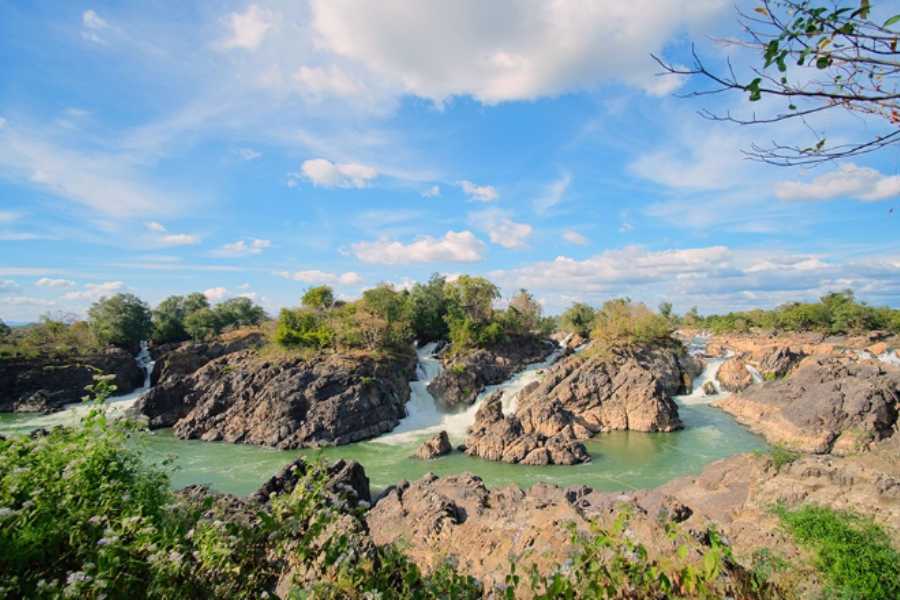
Champasak is home to Wat Phou, a Khmer temple complex that predates Angkor Wat and is a UNESCO World Heritage Site. The Bolaven Plateau, nearby, is great for coffee plantation tours and multi-day motorbike loops through highland scenery.
These stunning spots are just a few among the Best Places to Visit in Laos for first-timers and returning travelers alike.
Off-the-Beaten-Path Picks: Vieng Xay, Phonsavan, Muang Ngoi
Vieng Xay: A remote town with historic caves used by the Pathet Lao during the Indochina War. A unique historical and cultural site.
Phonsavan: Known for the mysterious Plain of Jars, an archaeological wonder. Also important for learning about Laos’ war history and UXO clearance efforts.
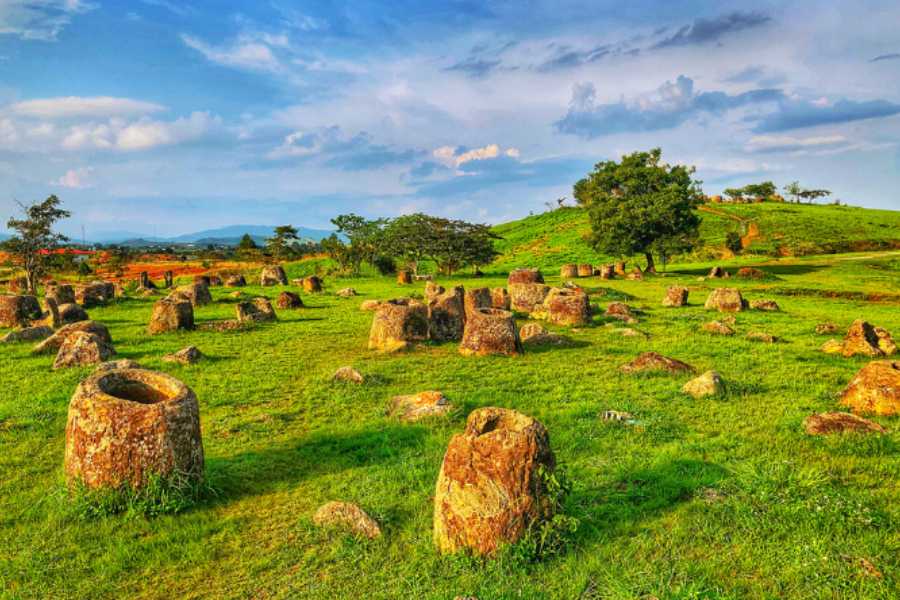
Muang Ngoi: A car-free riverside village only accessible by boat. Surrounded by cliffs and rice fields, it’s ideal for trekking, relaxing, and disconnecting.
Insider Tips for Cultural Etiquette and Respectful Travel
Temple Etiquette: Dress Codes, Offerings, and Behavior
Temples are sacred spaces in Laos, and visiting them respectfully is essential. Always dress modestly - shoulders and knees should be covered for both men and women. Avoid wearing hats, sunglasses, or revealing clothing inside temple grounds.
Before entering, remove your shoes and keep your head lower than that of any Buddha images or monks. It’s polite to bow slightly when passing or approaching a Buddha statue.
Offerings such as flowers, incense, or small donations are welcome, but should be made quietly and respectfully. Never touch a monk - especially if you are female - and avoid sitting or pointing your feet toward sacred objects.

Interacting with Locals: Smiles Over Words
Laotians are warm and gentle, and a smile goes a long way. English is spoken in tourist areas, but learning a few Lao phrases or using gestures shows respect and effort.
Avoid loud voices, aggressive behavior, or public displays of affection, which are considered inappropriate. Touching someone’s head, even a child’s, is also disrespectful in Lao culture.
When entering someone’s home or a rural village, follow your guide’s lead, take off your shoes if asked, and always ask before taking photos of people.

Do’s and Don’ts for Responsible Tourism
Helpful actions to consider:
Choose local businesses and community-led services: Staying in family-run guesthouses, dining at local restaurants, and booking ethical tours helps support the livelihoods of people in the region.
Bring reusable items: A refillable water bottle and a cloth bag for shopping are simple ways to reduce single-use plastics and minimize your environmental footprint.
Embrace the local pace: Life in Laos moves slowly and calmly. Being flexible with schedules and showing patience during your travels reflects cultural understanding and respect.
Practices best avoided: Offering gifts or money to children: While well-meaning, giving money or sweets can encourage dependency and disrupt education. Supporting local schools or charities is a better alternative.
Entering sacred or private spaces without permission: Many temples, homes, or village areas have cultural or spiritual importance. Always ask before entering and dress modestly, especially in religious settings.
Buying items made from wildlife or antiques: Purchasing such items may be illegal or contribute to the loss of cultural heritage and biodiversity. It’s better to support artisans making sustainable, traditional crafts.
Practicing mindful, respectful travel in Laos not only deepens your experience but also contributes positively to the communities you visit.
Packing and Travel Essentials for Laos
What to Pack for the Climate and Terrain
Laos has a tropical climate with two main seasons - dry (November to April) and wet (May to October). Temperatures can vary between lowland cities and mountainous regions, so it’s best to pack light, breathable clothing along with a few layers.
- Lightweight clothes: Quick-dry shirts, shorts, and trousers are ideal.
- Modest wear: Long sleeves and pants or skirts for visiting temples.
- Rain gear: A compact rain jacket or poncho is a must during the green season.
- Footwear: Comfortable walking shoes or sandals with grip for mixed terrain.
- Sun protection: Hat, sunglasses, and strong sunscreen (harder to find in rural areas).
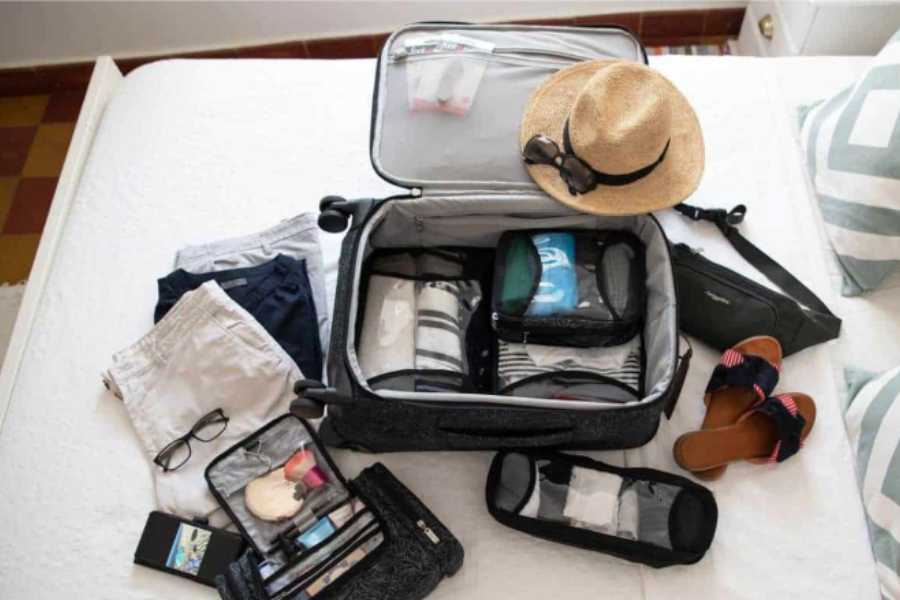
If trekking in northern Laos or visiting places like Phonsavan or the Bolaven Plateau, bring a warm layer for cool evenings.
Health, Medications, and Mosquito Protection
Staying healthy during your trip to Laos is all about preparation and prevention. The country’s laid-back charm extends to its healthcare infrastructure, which can be basic in rural areas - so packing smart is essential.
Basic first aid kit: It's always a good idea to carry a small kit with band-aids, antiseptic wipes, pain relievers, and any other over-the-counter medications you regularly use. This comes in handy, especially if you’re planning to trek or spend time outdoors.
Prescription medications: If you take prescription medicine, bring enough for your entire trip. Pharmacies in Laos might not stock international brands, and it’s best not to rely on finding your medication locally.
Recommended vaccinations: Before your trip, consult a travel clinic. Commonly advised vaccinations for Laos include Hepatitis A, Typhoid, and Tetanus. Depending on your itinerary, others like Japanese Encephalitis may also be suggested.
Mosquito protection: Dengue fever and other mosquito-borne illnesses can be a concern, especially during the wet season. Bring a strong insect repellent (preferably DEET-based), wear long sleeves and pants in the evenings, and consider packing mosquito coils or plug-in repellents if you're staying in rural guesthouses.
Water safety: Tap water is not safe to drink in Laos. To stay hydrated and avoid stomach issues, carry a reusable water bottle with a built-in filter or bring water purification tablets - particularly important if you're exploring off-grid areas.

Cash, ATMs, SIM Cards, and Connectivity Tips
Managing money and staying connected in Laos is easy once you know what to expect. A little advance planning ensures smooth travel - especially when venturing beyond the main cities.
- Currency basics: The official currency is the Lao Kip (LAK). In touristy areas, some vendors accept US dollars or Thai Baht, but for everyday purchases like meals and transport, Kip is essential.
- ATM access: You’ll find ATMs in larger towns like Luang Prabang, Vientiane, and Pakse. However, in rural areas and small villages, they may be scarce or non-existent. It’s wise to carry extra cash when heading off the beaten path.
- Buying a local SIM card: Getting connected is simple and affordable. SIM cards from providers like Unitel or Lao Telecom can be purchased at airports, markets, or convenience stores. They offer data packages at reasonable prices, and coverage is decent across much of the country.

- Wi-Fi availability: Most guesthouses, hostels, and cafés in cities provide free Wi-Fi. That said, expect slower speeds and less reliable service once you leave major towns. Downloading offline maps and translation apps before traveling to remote areas can be very helpful.
Bonus Travel Tips from Seasoned Laos Travelers
Best Photography Spots and Times of Day
Laos offers stunning natural light and serene landscapes, making it a dream for photographers. The best times to capture photos are during golden hour - just after sunrise and before sunset - when soft light enhances temples, rivers, and rice paddies.
Top photography spots include:
- Kuang Si Falls (Luang Prabang) - Best in the morning before crowds arrive.
- Mount Phousi (Luang Prabang) - Sunrise offers mystical views over the Mekong with morning mist.
- 4000 Islands (Si Phan Don) - Sunset over the Mekong River creates brilliant colors.
- Vang Vieng's Karst Mountains - Sunrise from a hot air balloon or lookout point.
- Plain of Jars (Phonsavan) - Early or late light brings out the texture of the stone jars.
How to Support Local Communities While Traveling
Traveling in Laos gives you the opportunity to make a meaningful impact.
- Stay local: Choose homestays, guesthouses, and family-run lodges instead of chain hotels.
- Eat local: Dine in family restaurants and at village markets to keep money in the community.
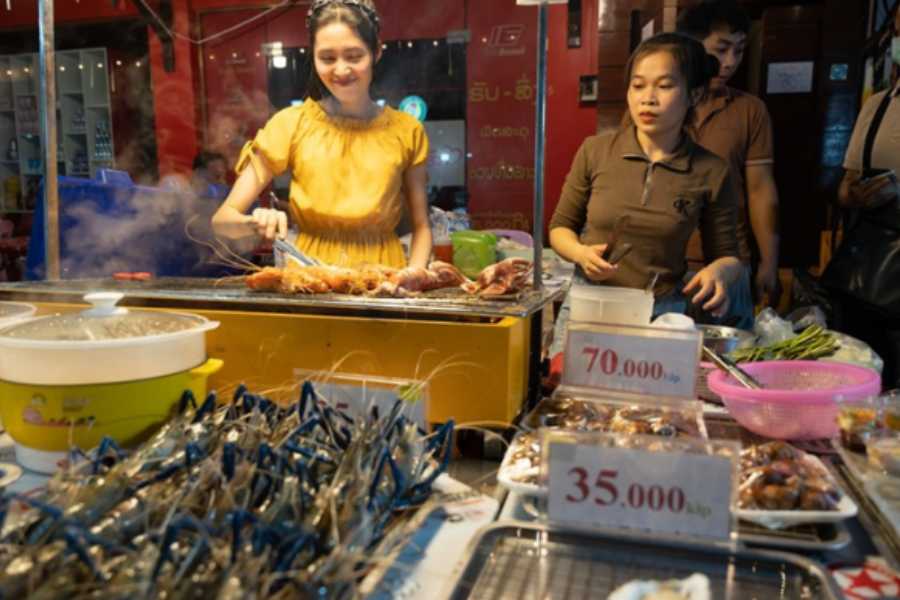
- Shop responsibly: Buy handmade crafts directly from artisans, especially textiles from ethnic groups like the Hmong or Tai Dam.
- Book ethical tours: Seek out community-based tourism operators that involve locals and avoid exploitation.
- Minimize waste: Refill water bottles, say no to plastic bags, and dispose of trash properly - especially in rural areas.
These choices create authentic experiences and leave a positive footprint.
What Travelers Wish They Knew Before Visiting Laos
The pace is slow: Transportation can be delayed and timetables are flexible. Embrace the relaxed rhythm — patience is part of the journey.
Limited connectivity: Internet access outside major towns is slow or nonexistent. Download offline maps and essential apps before heading into remote areas.
Cash is essential: Credit cards are rarely accepted outside of high-end hotels. ATMs are available in major cities but scarce in rural regions. Always carry enough local currency (LAK) when traveling off the beaten path.
Cultural respect goes a long way: Modesty in clothing and behavior is highly valued. Speak gently, avoid confrontation, and always remove your shoes when entering temples or homes.
Nature is beautiful but rugged: Roads can be bumpy and basic amenities are common in remote areas. Luxury may be limited, but the landscapes and simplicity make it worth the trade.
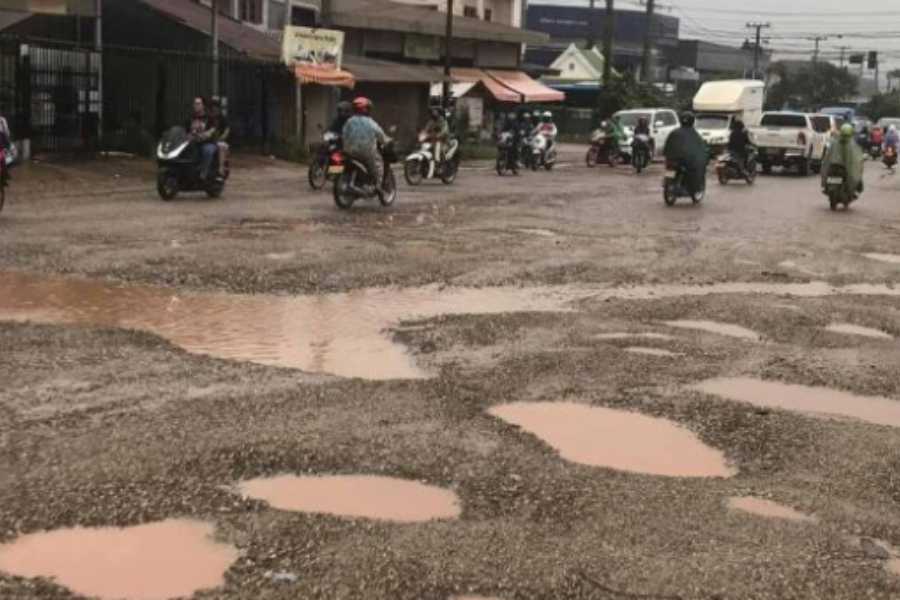
Laos is peaceful and authentic: Travelers often say Laos becomes one of the most memorable parts of their Southeast Asia trip — not because it's flashy, but because it’s deeply serene, welcoming, and real.
Final Thoughts: Your Laos Adventure Starts Here
Why Laos Leaves a Lasting Impression
Laos doesn’t overwhelm with bright lights or touristy hustle - instead, it quietly wins hearts with its gentle rhythm, spiritual depth, and stunning natural beauty. From misty mornings on the Mekong to candlelit evenings in temple courtyards, the country offers a deeply personal kind of travel experience. Most visitors leave feeling more relaxed, more connected to nature, and more appreciative of simple moments.
Whether it’s the warmth of a local homestay, the golden glow of Luang Prabang at dusk, or the thrill of kayaking past karst cliffs in Vang Vieng, Laos leaves a mark that lingers long after your trip ends.
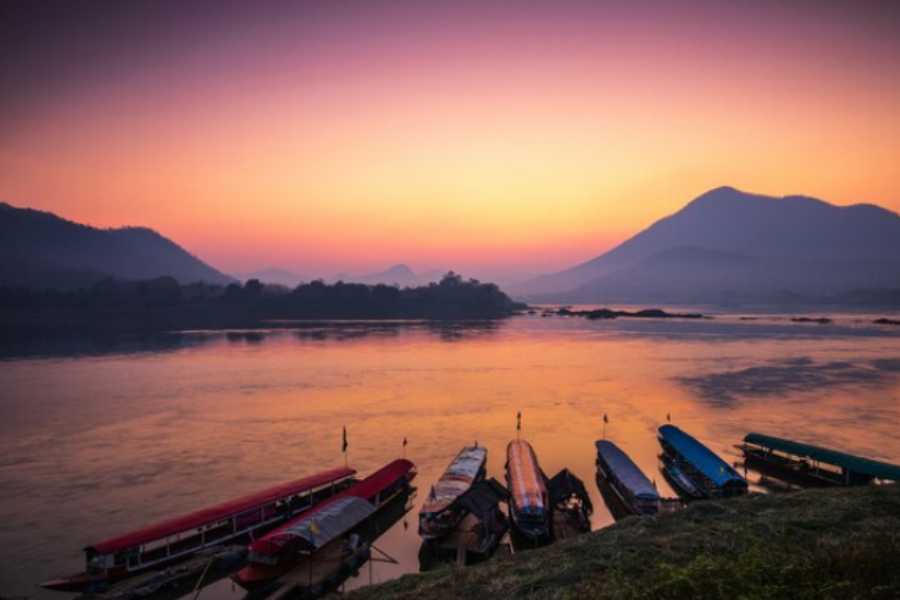
Suggested Itinerary Ideas Based on Your Travel Style
-
For Cultural Travelers (7-10 days):
Luang Prabang → Nong Khiaw → Vientiane
Focus on temples, traditional villages, and slow river life.
- For Nature and Adventure Lovers (10-14 days):
Vang Vieng → Luang Prabang → 4000 Islands → Bolaven Plateau
Trekking, waterfalls, kayaking, and island cycling.
- For Slow Travelers and Couples (10+ days):
Luang Prabang (5 days) → 4000 Islands (3 days) → Champasak (2 days)
Scenic stays, coffee plantations, and riverside relaxation.
- For Budget Backpackers (2-3 weeks):
Chiang Mai (Thailand) → Huay Xai → Pakbeng (slow boat) → Luang Prabang → Vang Vieng → Vientiane → 4000 Islands
Overland travel, hostels, and authentic street food.
Resources to Plan Your Trip Further
Planning a trip to Laos doesn’t have to be complicated — with the right tools and knowledge, you can prepare a journey that’s smooth, enriching, and respectful of the local culture. Here are essential resources to help you get started:
Visa Information: Many nationalities are eligible for a Visa on Arrival at international airports and key land borders. Alternatively, you can apply for an eVisa online through the official Lao government portal. Be sure to check the latest requirements, including passport validity, entry points, and visa fees.
Transportation Booking: For booking buses, minivans, trains, and even regional flights across Laos and neighboring countries, platforms like 12Go Asia are reliable and user-friendly. Schedules are posted in English, and online payments help you avoid local booking hassles.

Accommodation Options: Whether you’re looking for riverside resorts, eco-lodges, or budget-friendly homestays, websites like Agoda and Booking.com offer a wide range of listings. Reviews, photos, and flexible cancellation policies make it easy to choose the right fit for your travel style.
Local Tours & Experiences: For immersive cultural experiences and ethical adventures, platforms such as Backstreet Academy, Klook, or your local tourism office offer small-group tours led by local guides. These range from handicraft workshops and cooking classes to village treks and spiritual ceremonies.
Offline Navigation Tools: Wi-Fi and mobile data can be unreliable in rural Laos. Download Google Maps offline for areas you’ll visit, or try apps like Maps.me for trail-friendly routes. These tools are crucial for finding accommodations, trails, and restaurants when signal drops.
Additional Resources
-
Travel Insurance: Consider companies like SafetyWing or World Nomads for coverage that includes healthcare, delays, and outdoor activities.
-
Currency Converters: XE Currency or Wise (formerly TransferWise) are helpful apps for real-time exchange rates and managing expenses abroad.
- Language Support: Apps like Google Translate or LaoPhrasebook can help with basic phrases when English isn’t understood.













